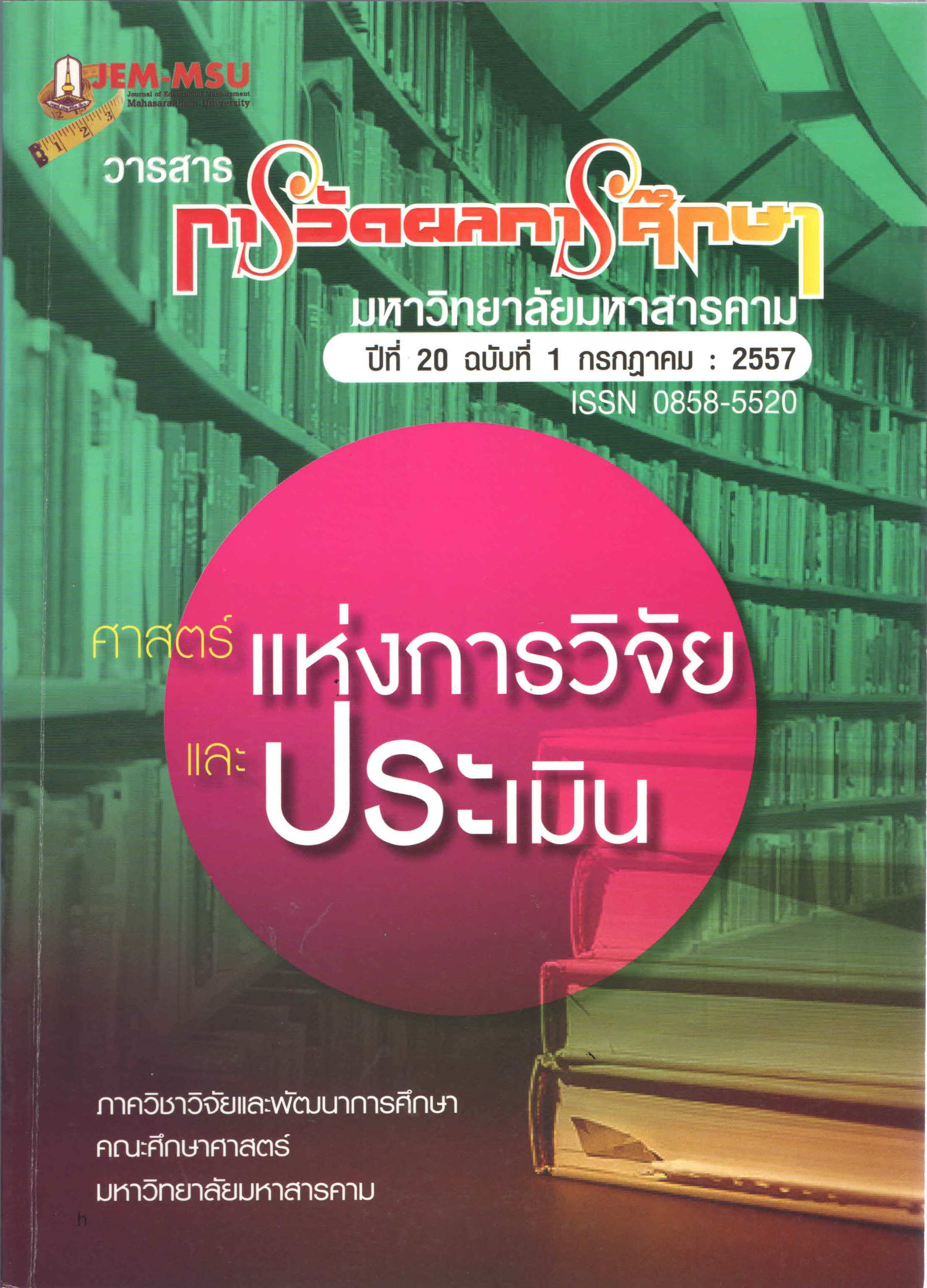A Comparison of Self-Directed Learning and Lifelong Learning of Mathayomsueksa 3 Students under the Office of Secondary Education Service Area Zone 26. with Different Learning Styles and Teaching Styles
Main Article Content
Abstract
Regarding to student promotion for effective learning and ability of selfdirected learning and lifelong learning, it should not only consider teaching styles
of teachers, but also learning styles of students. It could be said that the teachers’
teaching styles and the students’ learning styles should be consistent. Therefore,
the purposes of this research were to compare the self-directed learning and the
lifelong learning of Mathayomsueksa 3 students with different learning styles and
Teaching Styles. Moreover, it aimed to investigate reaction outcomes between
the learning and teaching styles towards the self-directed learning and lifelong
learning of Mathayomsueksa 3students. The samples were 430 Mathayomsueksa 3
students who were randomized by using multi-stage random sampling. Research
tools consisted of Self-direct Learning measurement form with 30 questions. The
discrimination of this form was between .260 - .654 and the reliability was 0.90. In
addition, Lifelong Learning measurement form was also used including 30
questions. The discrimination of this form was between .258-.799 and the
reliability was .939. Furthermore, Learning questionnaire was implemented with 36
questions. The discrimination of this form was between .203-.581and the reliability
was .868. Besides, Instructional questionnaire was applied with 30 items. The
discrimination of this form was between .228-.623 and the reliability was .897.
Several statistics were conducted including percentage, mean, standard deviation
and Two-way MANOVA was used for improving hypothesis.
The results was shown as below.
1. Regarding to the comparison of self-directed learning and lifelong
learning of Mathayomsueksa 3 students with different teaching styles and learning
styles, it indicated that
1.1 The students with different learning styles had different selfdirected learning and lifelong learning with a .05 level of statistical significance.
1.2 The students with different teaching styles and different selfdirected learning and lifelong learning with a .05 level of statistical significance.
2. There was the reaction between the learning and teaching styles as
well as self-directed and lifelong learning.
In conclusion, the students with avoidance style were able to apply the
self-directed learning and lifelong learning more than other students, when
receiving facilitator style. Thus, the teachers should promote the students with
avoidance style by using the facilitator style. Additionally, relevant persons
should provide the students with appropriate teaching styles for the best selfdirected learning and lifelong learning to meet desirable outcomes and achieve
defined objectives.
Article Details
The content and information contained in the published article in the Journal of Educational Measurement Mahasarakham University represent the opinions and responsibilities of the authors directly. The editorial board of the journal is not necessarily in agreement with or responsible for any of the content.
The articles, data, content, images, etc. that have been published in the Journal of Educational Measurement Mahasarakham University are copyrighted by the journal. If any individual or organization wishes to reproduce or perform any actions involving the entirety or any part of the content, they must obtain written permission from the Journal of Educational Measurement Mahasarakham University.


